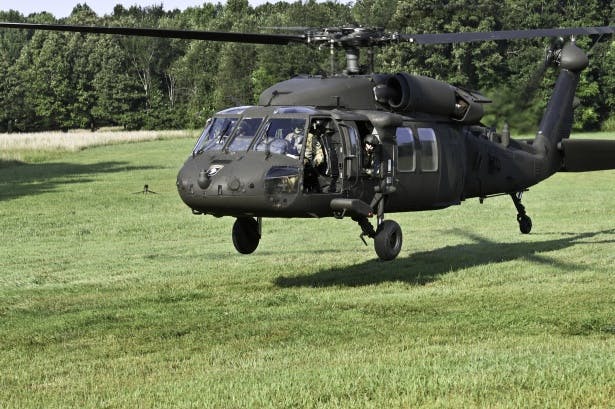How the UH 60 Revolutionized Helicopter Design for Military and Civilian Uses
How the UH 60 Revolutionized Helicopter Design for Military and Civilian Uses
Blog Article
Whatever You Need to Learn About the UH 60 Helicopter
The UH-60 helicopter, a keystone of U.S. Army aviation considering that its debut in 1979, represents an exceptional mix of design and functional flexibility. As military demands evolve, so also does the helicopter, with recurring innovations intended at boosting its abilities and integrating modern technologies.
Background of the UH-60
Developed in the late 1970s, the UH-60 Black Hawk helicopter became a feedback to the U.S. Military's demand for a flexible energy helicopter that can perform a range of goals under difficult conditions. The catalyst for its layout was the imperfections identified in the earlier helicopters utilized throughout the Vietnam War, particularly in regards to speed, survivability, and maneuverability.
The Black Hawk was designed by Sikorsky Aircraft, incorporating innovative innovations and materials to boost its performance and resilience. It was officially introduced right into solution in 1979, swiftly ending up being a crucial property for army operations - uh 60. Its capability to deliver troops, medical discharge, and logistical support in both battle and humanitarian goals made the Black Hawk an invaluable part of the U.S. Military's aviation fleet
Throughout the decades, the UH-60 has been continually updated, adjusting to the changing nature of war and the evolving needs of modern-day army procedures. Its operational background includes engagement in significant problems, peacekeeping missions, and disaster alleviation efforts, strengthening its online reputation as a effective and reliable helicopter in different environments worldwide.

Style and Specs
The design of the UH-60 Black Hawk helicopter consistently mirrors a commitment to operational efficiency and flexibility. Developed by Sikorsky Aircraft, this medium-lift utility helicopter includes a streamlined, wind resistant fuselage that enhances rate and ability to move. Its tandem rotor system, characterized by two counter-rotating blades, minimizes vibration and increases lift capability, enabling more secure operations in diverse environments.
The UH-60 is powered by 2 T700-GE-701C turboshaft engines, offering a maximum speed of around 180 knots and a series of around 400 nautical miles. Its robust airframe is created from innovative composite products, making certain durability while preserving a fairly low weight. The helicopter has a maximum gross weight of concerning 22,000 extra pounds, sustaining a versatile haul configuration.

Functions and Missions
A functional system, the UH-60 Black Hawk helicopter offers a wide variety of roles and objectives within armed forces operations. Developed primarily for army transport, it can lugging up to 11 soldiers, making it an important possession for quick implementation and logistical support.
Along with army transportation, the UH-60 succeeds best site in clinical discharge (MEDEVAC) missions, outfitted with sophisticated clinical tools to offer vital care throughout transit. Its ability to run in diverse settings improves its efficiency in fight search and rescue (CSAR) operations, where swift extraction of employees is crucial.
The helicopter likewise plays a substantial role in reconnaissance and monitoring goals, making use of onboard sensing units and equipment to collect knowledge. Its versatility expands to logistical support, qualified of moving supplies and devices to ahead running bases.
In combat operations, the UH-60 can be equipped with various tool systems, enabling it to offer close air assistance. Its multi-role ability makes the Black Hawk a vital tool for contemporary army forces, adapting flawlessly to the advancing demands of battleground scenarios and making certain goal success throughout a range of operational contexts.
Performance and Capacities
Understood for its robust performance, the UH-60 Black Hawk helicopter flaunts remarkable capacities that click this site enhance its functional efficiency throughout different goals. uh 60. This multi-role aircraft is furnished with effective twin-engine Turbomeca Arriel 1D1 engines, giving extraordinary speed and maneuverability, with an optimum cruise ship rate of approximately 150 knots and an operational variety of around 400 maritime miles
The Black Hawk's sophisticated avionics and fly-by-wire control systems significantly boost trip security and handling, enabling it to operate in diverse atmospheres, consisting of unfavorable weather problems. Its adaptability is further exemplified by its capacity to carry as much as 11 completely geared up soldiers or a payload of roughly 8,000 pounds, making it optimal for army transport, clinical emptying, and logistical support missions.
In Addition, the UH-60 is created for survivability, including reinforced airframes, ballistic defense for team and passengers, and progressed countermeasure systems to evade risks. The helicopter's dexterity and rate, combined with its capacity for rapid implementation, make it an indispensable possession in modern-day military procedures, making certain that it remains a crucial component of tactical air assistance and battleground wheelchair.
Future Developments

One significant focus is the assimilation of innovative avionics systems, which will certainly improve situational understanding via boosted navigating and communication abilities. This includes the possible use of synthetic knowledge to aid pilots in decision-making and goal preparation.
Moreover, future variations might include innovative materials and layout attributes to reinforce the helicopter's toughness and lower its radar signature, boosting survivability in disputed settings.
The introduction of hybrid-electric propulsion systems is also imminent, aiming to boost gas performance and minimize logistical worries. Such advancements could prolong operational range and reduce the helicopter's environmental impact.

Verdict
The UH-60 helicopter stands for a significant advancement in armed forces aviation since explanation its introduction in 1979. The UH-60's withstanding visibility emphasizes its vital role in modern military procedures and highlights the ongoing advancement of military aeronautics innovation.
The UH-60 helicopter, a foundation of U.S. Military aeronautics considering that its debut in 1979, stands for an impressive mix of engineering and operational flexibility. As military requirements advance, so too does the helicopter, with recurring improvements aimed at boosting its capacities and incorporating contemporary technologies.The layout of the UH-60 Black Hawk helicopter continually reflects a commitment to functional efficiency and versatility. Created by Sikorsky Aircraft, this medium-lift utility helicopter features a streamlined, wind resistant body that boosts speed and maneuverability.The UH-60 helicopter stands for a significant improvement in military aeronautics because its intro in 1979.
Report this page